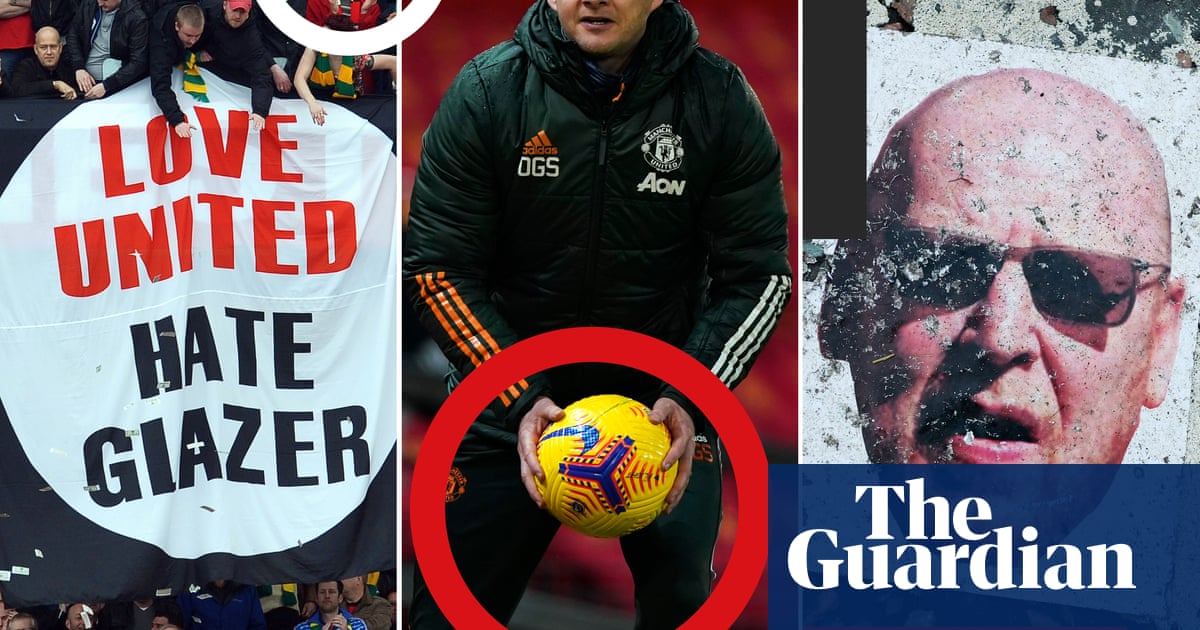Initial percentage ofManchester Unitedbought by Malcolm Glazer in May 2003 – by the end of the year it stood at 15%.
Percentage Glazer increased his holding to in June 2004 after claiming in March of that year that he had “no current intention” of bidding.
Sum Glazer agreed to pay JP McManus and John Magnier on 12 May 2005 for their 28.7% holding in United, buying their shares for £3 each. Four days later, Glazer had acquired a total share in the club of 75%, which allowed him to delist United from the London Stock Exchange. This occurred on 22 June and soon Glazer owned 98% of the club via his Red Football parent company.
Debt loaded on to United as a direct result of Glazer’s purchase of the club. Interest repayments on that debt stood at £62m per annum.
Number of Glazer children – Joel and Avram – who took over the day-to-day running of United when Malcolm suffered a stroke in April 2006.
The then world-record fee Cristiano Ronaldo wassold to Real Madridfor in June 2009.
Amount raised in the two weeks after the commencement of a bond issue in January 2010 that allowed Glazer to payoff most of the £509m he owed to international banks.
United’s total debt nine days after the commencement of the bond issue.
Number of Manchester United Supporters’ Trust membership aimed for by the Red Knights – a consortium made up of City bankers and lawyers – in order to complete a purchase of United. This occurred in early March 2010, rising soon after to 125,000. There are currently more than 200,000 members.
Amount financial analysts estimated would need to be raised by the Red Knights, or any other entity, in order to purchase United given Glazer’s own valuation of the club – £1.6bn ($2.14bn).
United’s valuation according to the New York Stock Exchange after club shares start trading on the NYSE in August 2012. The Glazer family make £75m from the process.
Malcolm Glazer’s age when he died in May 2014, leaving his six children as co-owners of the club. It emerged a year later that they would be paid more than £15m a year by the club.
Number of teams in April 2021’s proposed European Super League of which Joel Glazer was a prime force. Theidea was swiftly killedafter an intense supporter backlash.
Estimated value of United when the Glazer siblings announced a potential sale of the club in November 2022.
Sir Jim Ratcliffe’s minority holding as of last December after the Glazers sold part of their holding to the British billionaire.
United’s current debt, incorporating Glazer’s initial £790m leveraged buyout, plus an additional £300m in outstanding transfer fees, with a £300m loss recorded in the past three years.
Approximate amount, in Euros, United have spent on signings since Glazer’s purchase, according to transfermarkt.co.uk.
Approximate amount, in Euros, United have received in sales since Glazer’s purchase, according to transfermarkt.co.uk.
Premier League titles won by Sir Alex Ferguson, the last of which was secured in May 2013, just before his retirement from management.
Premier League titles won by United’s various managers in the proceeding 12 years.
United’s current position in the Premier League. They were third when Glazer took over 20 years ago.
